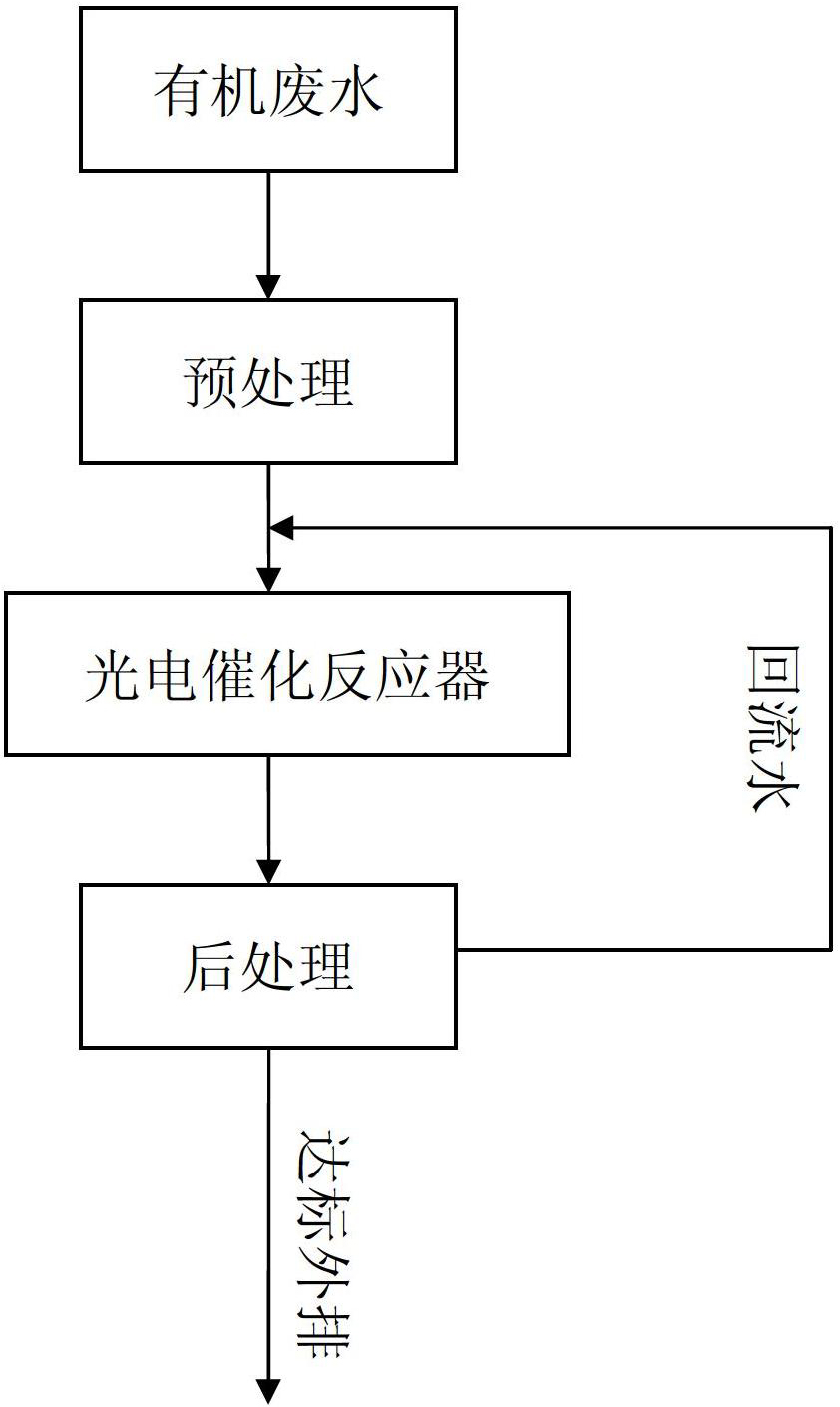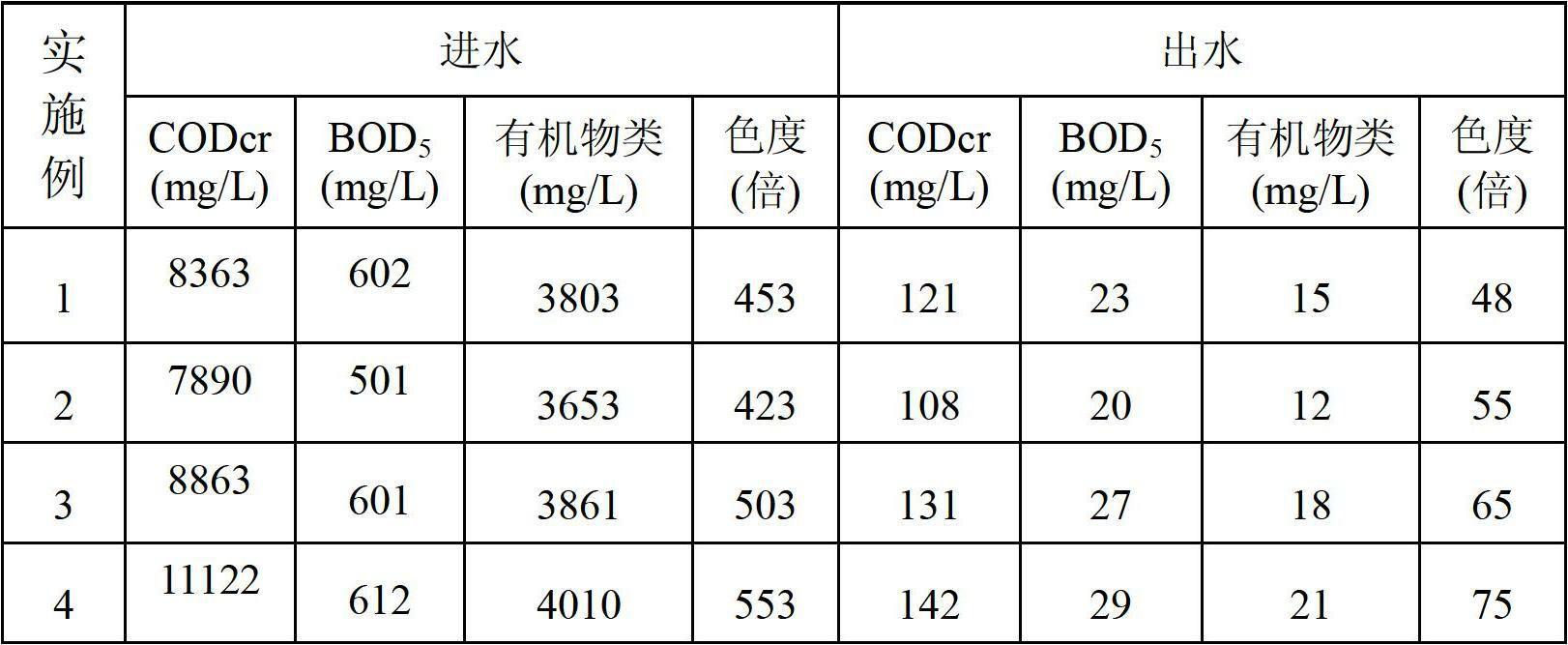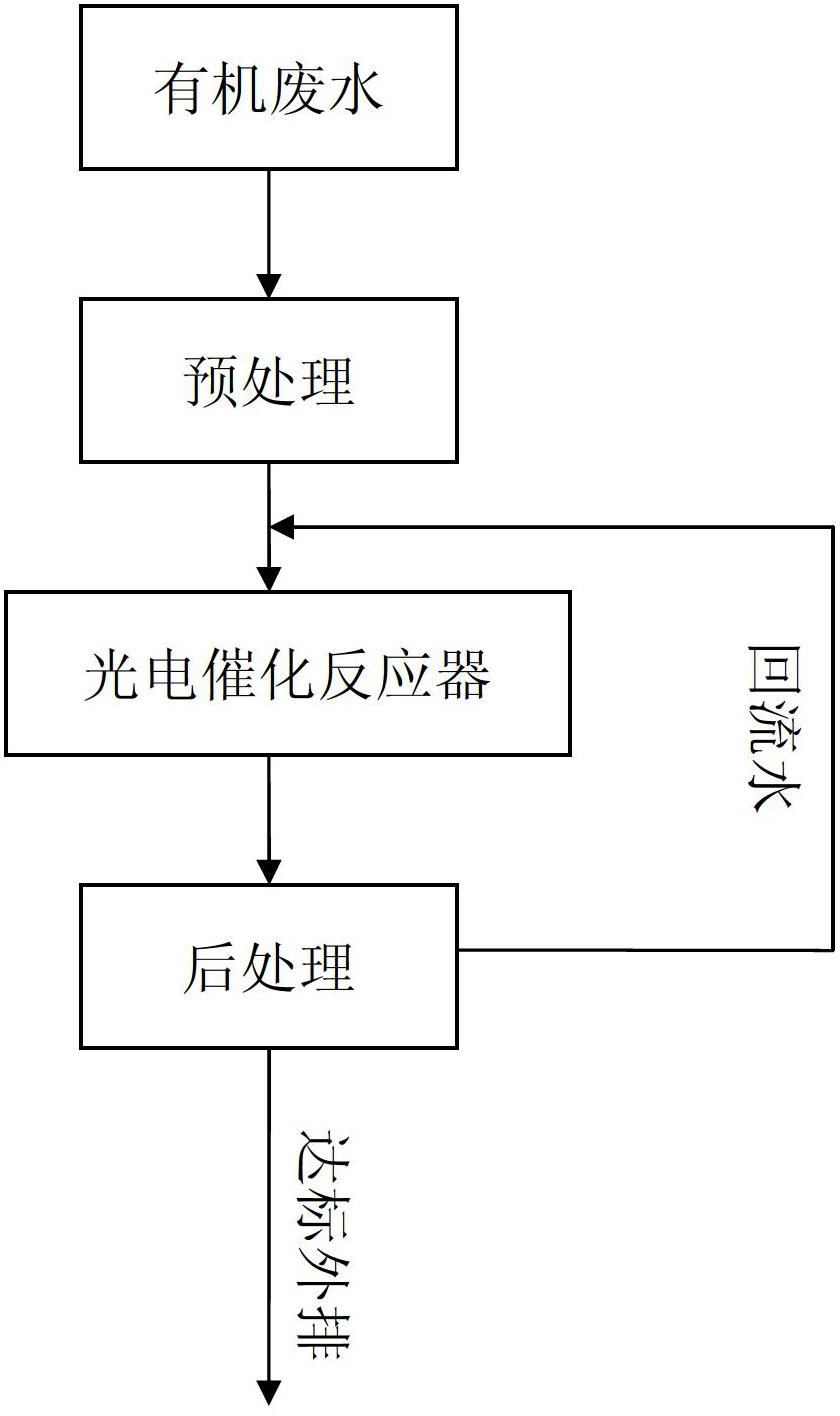Method for treating organic wastewater through photoelectric catalytic oxidation
A photoelectric catalysis and oxidation treatment technology, applied in the fields of oxidized water/sewage treatment, chemical instruments and methods, water/sewage treatment, etc., can solve the problems of secondary pollution, low treatment efficiency, difficult regeneration of activated carbon, etc., to achieve no secondary pollution The effect of pollution
- Summary
- Abstract
- Description
- Claims
- Application Information
AI Technical Summary
Problems solved by technology
Method used
Image
Examples
Embodiment Construction
[0019] Attached below figure 1 The present invention will be further described in detail with specific embodiments.
[0020] Implementation steps of the present invention are as follows:
[0021] 1. Pretreatment, the organic wastewater after oil separation is collected into the pH adjustment pool, and lime is added to the pool to adjust the pH to 3~6. After natural settlement, the supernatant is pumped to the photoelectric catalytic oxidation treatment system.
[0022] 2. Photoelectric catalytic oxidation treatment, the micro-electrolysis system is made of waste iron-coke, in which the weight ratio of iron to carbon is 1-5:1, and the ratio of organic waste water to iron-coke is 10-50:1, and dosing according to the amount of loss Iron filings are used to ensure its normal operation; the photocatalyst uses nano-TiO2 photocatalyst filter screen, the light source uses a 365nm wavelength ultraviolet lamp, the aeration flow rate is adjusted according to the amount of wastewater to ...
PUM
 Login to View More
Login to View More Abstract
Description
Claims
Application Information
 Login to View More
Login to View More - R&D
- Intellectual Property
- Life Sciences
- Materials
- Tech Scout
- Unparalleled Data Quality
- Higher Quality Content
- 60% Fewer Hallucinations
Browse by: Latest US Patents, China's latest patents, Technical Efficacy Thesaurus, Application Domain, Technology Topic, Popular Technical Reports.
© 2025 PatSnap. All rights reserved.Legal|Privacy policy|Modern Slavery Act Transparency Statement|Sitemap|About US| Contact US: help@patsnap.com



